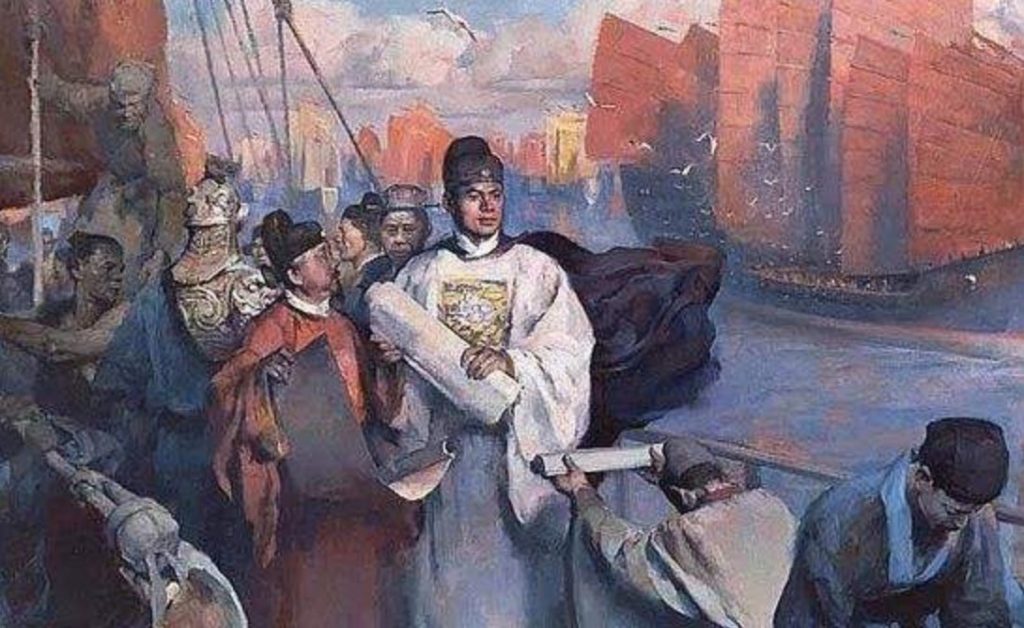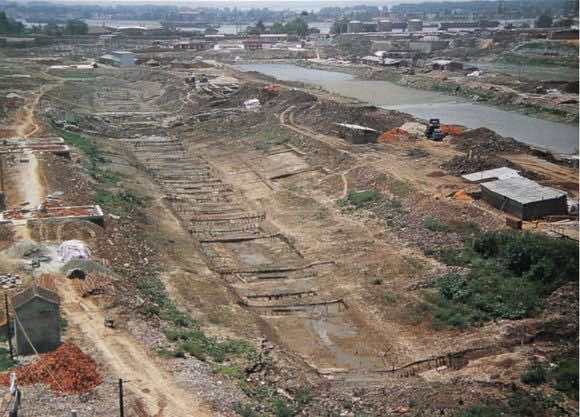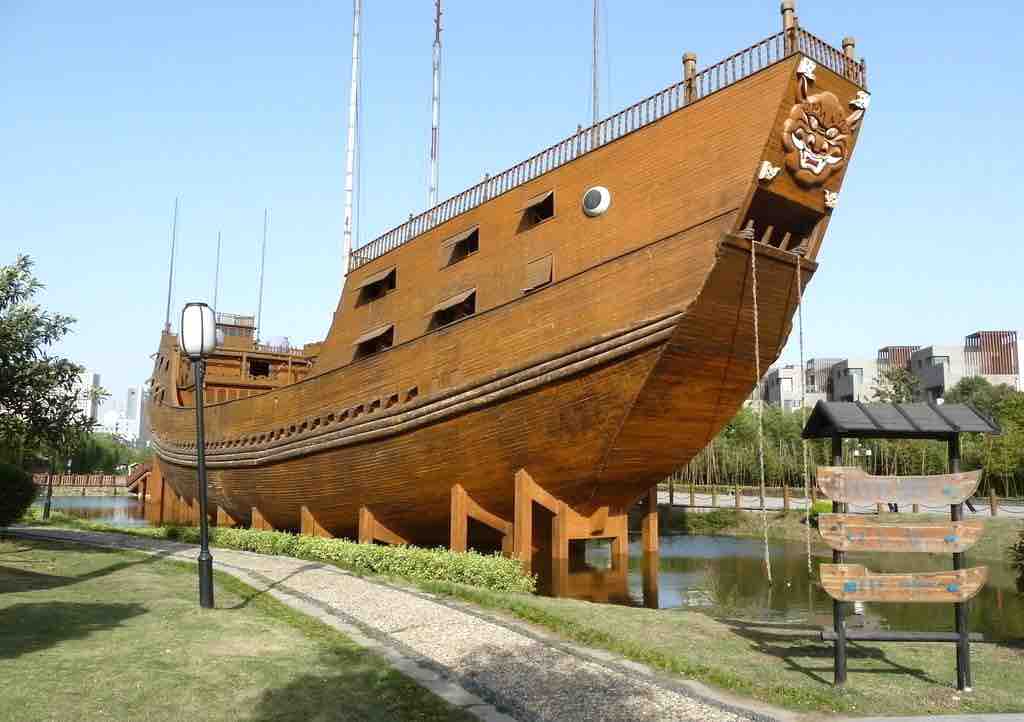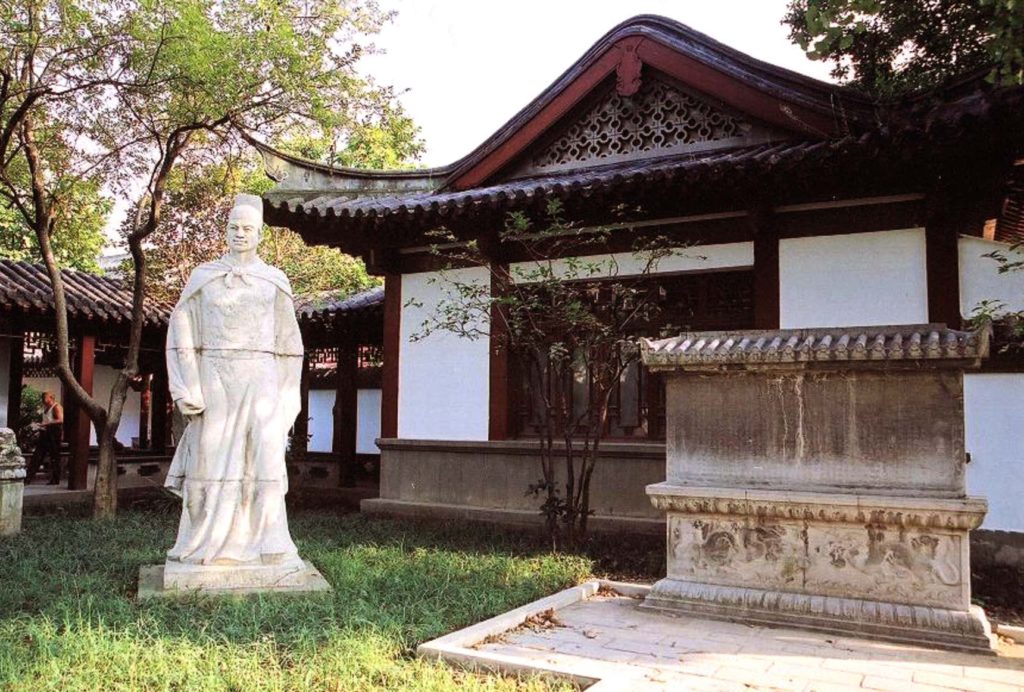
In Nanjing, there are seven shipbuilding ponds lined up parallel to the Yangtze River from south to north. This is the site of the Ming Dynasty Treasure Shipyard, which covers an area of one thousand acres.
The Ming Dynasty Treasure Shipyard site is the largest preserved ancient shipbuilding site in China. According to the Ming Dynasty documents, the shipyard was founded in 1405 AD.
It was a large government-run shipbuilding base built specifically for Zheng He’s voyages to various countries. Most of the ships in Zheng He’s fleet were built by the Bao Shipyard.
There were originally more than ten shipbuilding ponds at the site of the Bao shipyard. Due to the advancement of urban construction, many of them were gradually filled in. The three existing ponds, numbered four, five, and six, have been preserved in the site until now.
Great Archaeological Discovery
Nanjing Municipal Museum has conducted archaeological excavations on “No. 6” of these ponds. At the bottom of the pond cleared out the Ming Dynasty shipbuilding foundation relics 34, unearthed wood, iron, ceramics, masonry, and other types of precious cultural relics more than a thousand pieces.

The most important discovery was the unearthing of two basically well-preserved rudder poles of the treasure ship. The two rudder poles are of the same shape and both have a square head and flat tail. There are two rectangular holes in the head to install the rudder teeth. There are three rectangular shallow slots cut at the tail for the rudder blade.
The two rudder poles are 10.1m and 11m long respectively and are made of solid wood. The diameter of the logs is at least 0.88m at the widest point of the existing rudder poles. The test analysis, mainly produced in Southeast Asia, South Asia, and the tropical monsoon rainforest region in southern Yunnan, China’s precious tree species “Mesua Ferrea L“.
These two rudder poles are presumed to be an important reference for the shape and scale of the treasure ship used by Zheng He in the Western Ocean. Among the ship types recorded in the Nanfang Ji, the highest grade is the Royal Preparatory Da Huang Boat.
Because it was a riverboat, it was equipped with an elm rudder. The thousand-toned ships on the coastal route were also equipped with elm rudder shafts. Only the deep sea “four hundred material drill wind sea ship” is equipped with “Mesua Ferrea L” rudder. This shows that the “Mesua Ferrea L” rudder mast was extremely valuable in the Ming Dynasty.
In 1957, a similar “Mesua Ferrea L” rudder shaft of 11.03 meters long was unearthed in Liusaku Tong, which is now kept in the National Museum. Two rudder poles were unearthed again in the same pond, which fully verifies the scale and prosperity of shipbuilding in Lusakotang and the entire Ming Dynasty Bao shipyard at that time.

One explanation for the seeming inefficiency of these gigantic ships is that the largest of the 44 Zhangbao vessels were intended for the emperor and imperial bureaucrats to travel along the Yangtze River on court business, including the inspection of Zheng He’s expeditionary fleet.
With the calmer waters of the Yangtze, these treasure ships may have been navigable. Zheng He, as a court eunuch, would not have the privilege in rank to command these largest ships, whether seaworthy or not. The main ships of Zheng He’s fleet were instead 6 masts 2000 Liao boats.
Scale and Management of Treasure Ships
Zheng He’s fleet was the world’ s largest mixed fleet and the largest ocean-going fleet at the time. This fleet consisted of more than two hundred ocean-going ships of different types.
Treasure ships are seagoing vessels used to provide command, house missions and carry feudal and tribute goods. There are various sizes and types of ships by function. There were grain ships that were responsible for transporting food and logistical supplies and warships that were responsible for escorting the ships.
This oversized fleet was equipped with sailors, soldiers, doctors, cooks, translators, divination, and other types of professionals. Even to solve the problem of haircuts for more than 20,000 personnel on board, many barbers were brought along on every mission.
In spite of such a perfect maritime security, it was still not a simple task to lead such a large number and variety of ships to complete a long and long-range mission on the sea.
An orderly crew and scientific and efficient management methods were also essential. Therefore, Zheng He’s fleet was divided into two types of formations: the large fleet and the sub-fleet.
The large fleet was led by Zheng He himself, who was responsible for completing the main task of the Western voyages. The sub-voyages, on the other hand, were more flexible and could be led by Zheng He’s second-in-command or subordinates and could be divided into different places to complete specific tasks.
In order to facilitate command and prevent the ships from scattering and colliding, the large fleet was arranged into four core treasure ships as the center, surrounded by 32 treasure ships. The four corners of the outer perimeter were distributed to the seated ships. The outermost front and back and left and right by the warships escorting the formation.

Horse ships and grain ships were placed among the warships to ensure the efficiency and safety of food and water supply among the ships, and the whole fleet was like a winged swallow.
Before his first voyage to the Western Sea, Zheng He spent a lot of time and energy to train his sailors. This laid the foundation for later commanding the fleet to execute orders accurately and strictly on the vast sea.
To the point that the treasure ships could turn their direction 180 degrees in place. So as to quickly adjust to the most favorable state of combat.
It was this spirit of unity and cooperation that contributed to the realization of Zheng He’s seven ocean voyages.
In Conclusion
Today, the history of Zheng He is widely known for his voyages. Although he was a eunuch, he contributed greatly to the maritime trade of the Ming Dynasty. After 1433, Zheng He stopped sailing.
Zheng He was great when it came to his voyages. There is also debate about the purpose of his voyages.
A section of the population believes it was purely crummy to expand the Ming’s political influence and develop overseas trade. Others believe that the purpose of Zheng He’s voyage was to find traces of the Jianwen Emperor.




